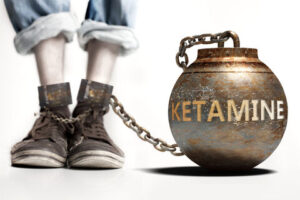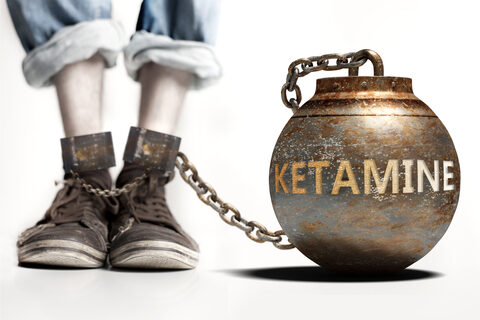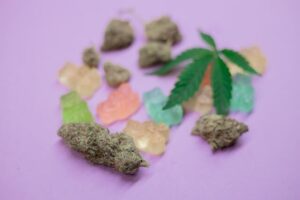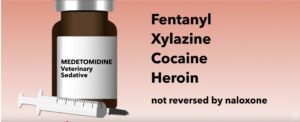
The fatal ketamine overdose of Matthew Perry in October 2023 led to five defendants, including two doctors, being charged in his death. Perry’s live-in personal assistant was coached on how to inject Perry with ketamine. The prescribing doctor knew the personal assistant had never received medical training and knew little, if anything, about administering or treating Perry. Allegedly, one of the doctors texted the other, stating, “I wonder how much this moron will pay”; and then “Let’s find out.” On October 28th, Perry was found dead by the personal assistant. Three of the individuals have pleaded guilty to their charges, and the two remaining had their trial rescheduled for this coming August.
Despite the publicity of Perry’s ketamine overdose death, there was a recent report by the BBC that James Lee Willliams, “better known as drag star The Vivienne,” died from cardiac arrest from the effects of ketamine. An inquest is scheduled to occur in June and there were no suspicious circumstances surrounding the performer’s death.
Psychiatry Online said while ketamine therapy for psychiatric disorders is increasingly popular, there are sharply opposing viewpoints on whether the risks outweigh the benefits. A psychiatrist in Richmond Virginia said: “Ketamine made two of my patients psychotic.” They eventually improved. The psychiatrist he was shocked at the number of psychiatric trainees that have a strong interest in providing ketamine and other psychedelic treatments, despite the lack of “scientific rigor surrounding their use.” He said he hoped that, “We as psychiatrists tame our enthusiasm for off-label use of a medication that is unproven.”
More than 1,500 intravenous (IV) infusion clinics have proliferated nationwide, and the U.S. ketamine industry is growing by leaps and bounds—expected to top $3.77 billion in revenue by year’s end, according to data from GrandView Research. Even the federal government has gotten on board: The Veterans Administration has contracted with clinics across the country to provide veterans who are receiving care from the VA with ketamine/esketamine treatments at no out-of-pocket cost.
Yet the industry is shifting from infusion clinics to individuals receiving ketamine therapy outside of clinical settings. Nearly half, 47%, receive ketamine therapy in their own homes. They ingest a compounded formula as a lozenge or lollipop that was prescribed via a virtual clinic. The question remains, is ketamine an efficacious treatment for depression and other psychiatric disorders, “or is it a modern-day snake oil with neurotoxic, addictive potential?”
In “Ketamine: The Story of Modern Psychiatry’s Most Fascinating Molecule,” the author said his research found ketamine to be generally safe and effective for refractory depression. “However, what’s most important is for patients to receive a thorough psychiatric evaluation at baseline, during, and after a course of ketamine.” He thought this was critical to ensure the individual has a condition that responds to ketamine and to rule out current substance use disorder or psychosis.
Alternately, a Columbia psychiatrist was concerned that patients may not be fully informed of the risks and lack of evidence for the off-label use of ketamine in people with psychiatric disorders. He said ketamine is being used for indications without a good evidence base suggesting it was likely to be effective, at doses that are highly variable, and in patients for whom it may be contraindicated. “When people talk about a ‘wild, wild west’ situation, they are accurately describing a largely unregulated and out-of-control system that is ketamine.”
Another psychiatrist at Columbia said research has shown the best outcomes have paired ketamine infusions with psychotherapy by a therapist specially trained in its use, which is expensive for the two-hour treatments. He commented that approach is not being practiced now. “Most people are simply left in a room by themselves during their infusions, with a technician occasionally checking on them. That by itself is not sufficient.”
One dose of racemic ketamine, decades off patent, costs less than $1, yet patients are typically charged $400 to $900 for a single infusion—substantially higher than a traditional physician appointment, Aoun pointed out. “So, there is certainly a financial incentive to offer this.” Once a ketamine clinic has invested in infrastructure, equipment, and staffing, “then you need to find patients to use it,” he added. “This can lead to a lowering of the diagnostic thresholds.”
Dr. Aoun described two individuals who quit psychotherapy, stopped taking antidepressants and have instead been receiving weekly ketamine infusions over the past couple of years. “They’re not doing any better [than when they started], they don’t seem happier or more motivated, they’re not functioning at a higher level.” Marketing has created the illusion that ketamine alone can make you feel better without taking part in psychotherapy, or working to improve your social life and interpersonal relationships. “That’s simply not true.”
The FDA regulations for direct-to-consumer advertising were crafted decades before the advent of telehealth providers and online consumer advertising. And there is a loophole that is being exploited when it come to the marketing of ketamine. Many virtual sites now peddle ketamine as treatment for disorders from PTSD, to anxiety, or substance use disorder, as well as restless leg syndrome. One telehealth provider offers ketamine to people who merely feel “stuck, trapped, and listless.” The use of take-home compounded ketamine products outside of medical settings is risky and misguided.
For more information on this concern, see “Voyages on the Starship Ketamine.”
Research on Ketamine Psychiatric Treatment
Psychologist Bruce Levine asked, why ketamine? Why would psychiatry turn to what had been known as a “club drug” used for a euphoric out-of-body experience, or by predators to facilitate sexual assault that is not approved by the FDA for any psychiatric disorder? What do scientific studies—not anecdotal reports—tell us about ketamine as a psychiatric treatment? He replied that doctors are allowed to prescribe a drug “off-label” for a condition the FDA has not approved “if the FDA had approved it for another condition.”
Unlike ketamine, psychedelic drugs such as LSD, mescaline, ayahuasca, and psilocybin are DEA classified as Schedule 1 drugs, meaning no acceptable medical use and a high potential for abuse, so these psychedelics cannot be legally prescribed off-label. Thus, a major reason for the ketamine industry’s growth is its “off-label loophole.”
In October 2023, Lii et al published “Randomized trial of ketamine masked by surgical anesthesia in patients with depression,” in Nature Mental Health. Levine noted where this study was designed to create a true control. Previous ketamine depression studies had ineffective controls because subjects could easily guess whether they had received a saline solution or ketamine, because “ketamine has such strong side effects.”
Lii and her co-researchers created a true randomized controlled trial (RCT) by using a subject pool of patients diagnosed with major depressive disorder (MDD) with moderate to severe levels of treatment resistance, all of whom were scheduled to undergo surgery; this allowed researchers to give all participants standard surgical anesthetic with half randomly assigned to receive ketamine, and this created the type of blinding or masking necessary for a true RCT.
Both the placebo group and the ketamine group showed large improvement post-infusion at one, two, and three days. The researchers thought the likely explanation was that heightened expectations created this improvement. In comparing the effectiveness between the placebo group and the ketamine group, a single dose of ketamine had no short-term effect on the severity of depression symptoms. “Our results suggest that ketamine may actually be ineffective for the short-term treatment of MDD.” Listen here to a YouTube recording of Theresa Lii’s talk about her study.
Mark Horowitz and Joanna Moncrieff noted in “Esketamine: an uncertain safety and efficacy data in depression,” that in five of six published studies (which were 4-week trials) did not report a statistically significant difference between placebo and esketamine. And in the single significant study, where esketamine did outperform the placebo, “the difference was smaller than the threshold that even Janssen researchers had established to be clinically significant.” Esketamine is a chemical cousin of ketamine. See “Repeating Past Mistakes with Esketamine.”
In a prior article in the British Journal of Psychiatry, “Are we repeating mistakes of the past?”, Horowitz and Moncrieff said deaths from ketamine included accidental poisonings, drownings, traffic accidents and suicide. “In Hong Kong, where it achieved particular popularity, ketamine had been used by 9% of individuals involved in fatal traffic accidents between 1996 and 2000.” Ketamine is also addictive, quickly inducing tolerance. Stopping regular use causes withdrawal, “characterised by anxiety, dysphoria and depression, shaking, sweating and palpitations, and craving the drug.”
It would seem difficult to distinguish this ‘rapid-onset antidepressant effect’ from the ‘high’ or altered state known to be induced by ketamine, however. Although some commentators claim that it leads to a genuine, long-lasting antidepressant effect, this has not been established in randomised trials, as emphasised in expert guidance. As ketamine was already licensed for use, Janssen applied for licensing of one of its enantiomers, (S)-ketamine, delivered by insufflation (via a nasal spray). (S)-ketamine, or esketamine, is twice as potent as ketamine.
There were also six deaths in the Janssen trials for esketamine. Three were suicides. One death was a motorcycle accident 26 hours after the esketamine administration. Another was a myocardial infarction 6 days after esketamine. And the third death was due to acute heart and lung failure 5 days after esketamine, in a person with risk factors.
These causes of death have been observed previously in ketamine use: blood pressure spikes cause heart failure and myocardial infarction in patients at risk; impairment of hand–eye coordination and its dissociative effects increase the risk of motor vehicle accidents.
Bruce Levine pointed to the rhetorical question posed by Horowitz and Moncreiff, “Are we repeating the mistakes of the past?” If then, he said, the definition of insanity is doing the same thing over and over again expecting different results, “then much of psychiatry is insane.”





